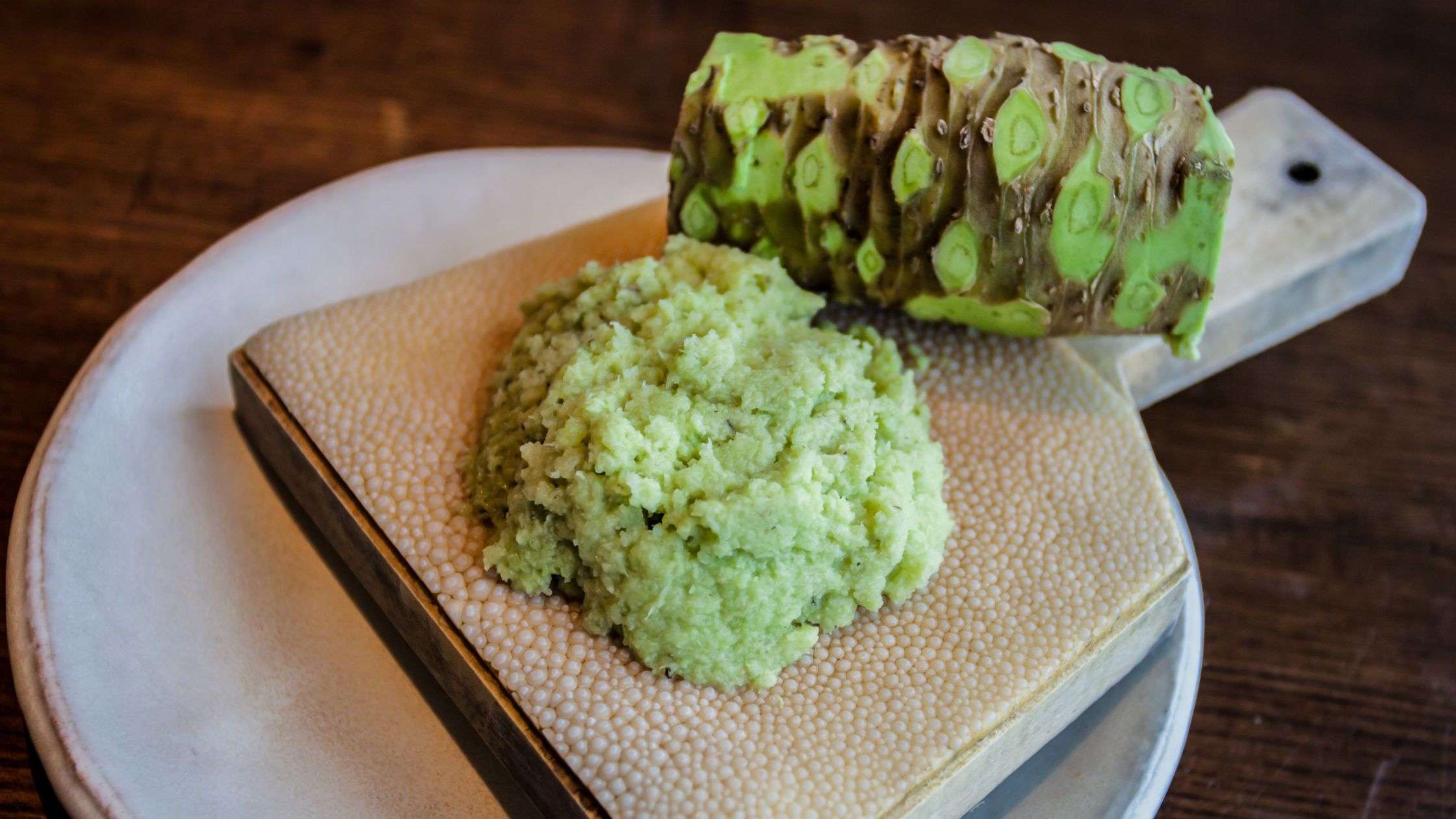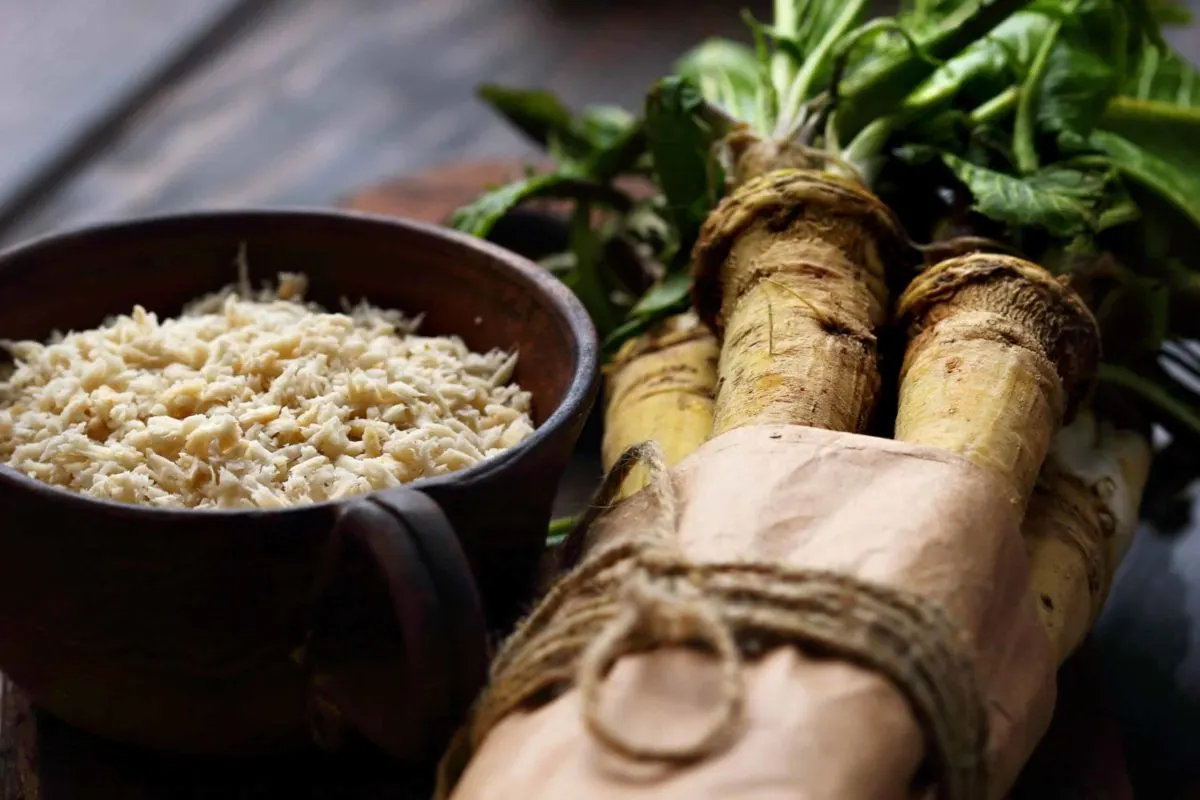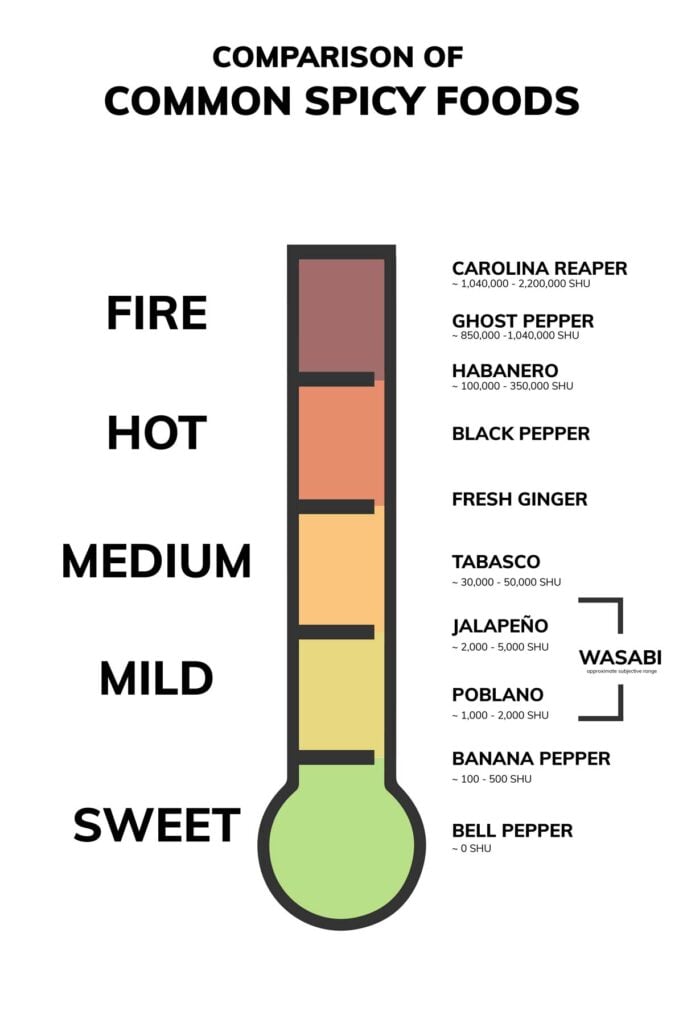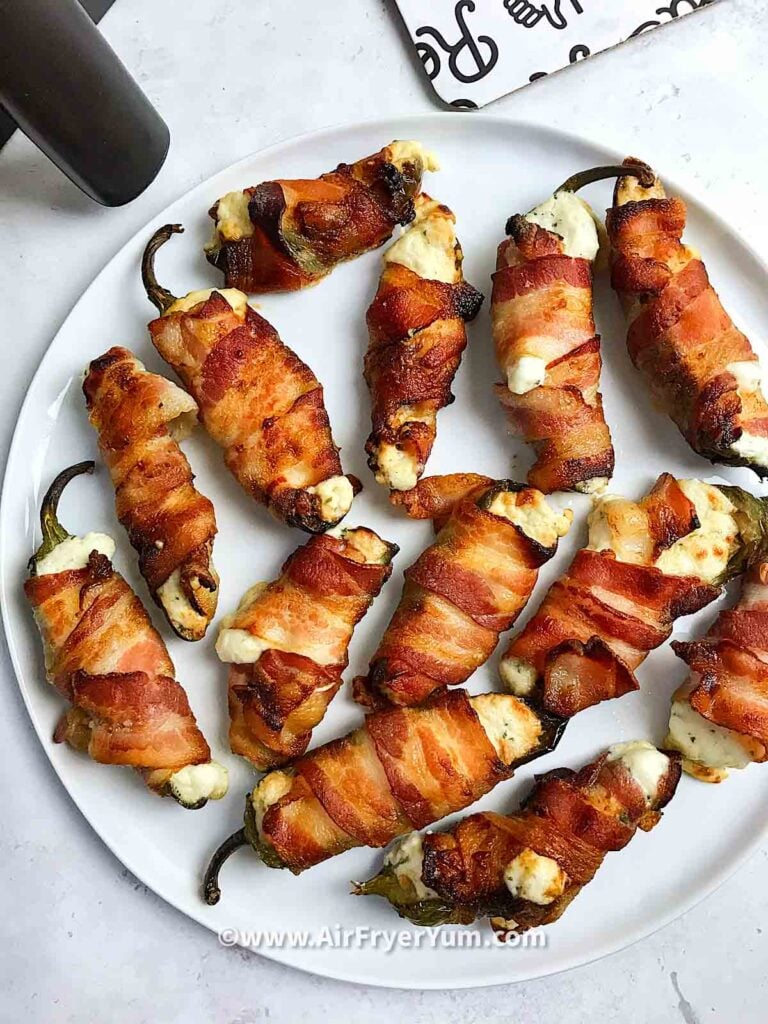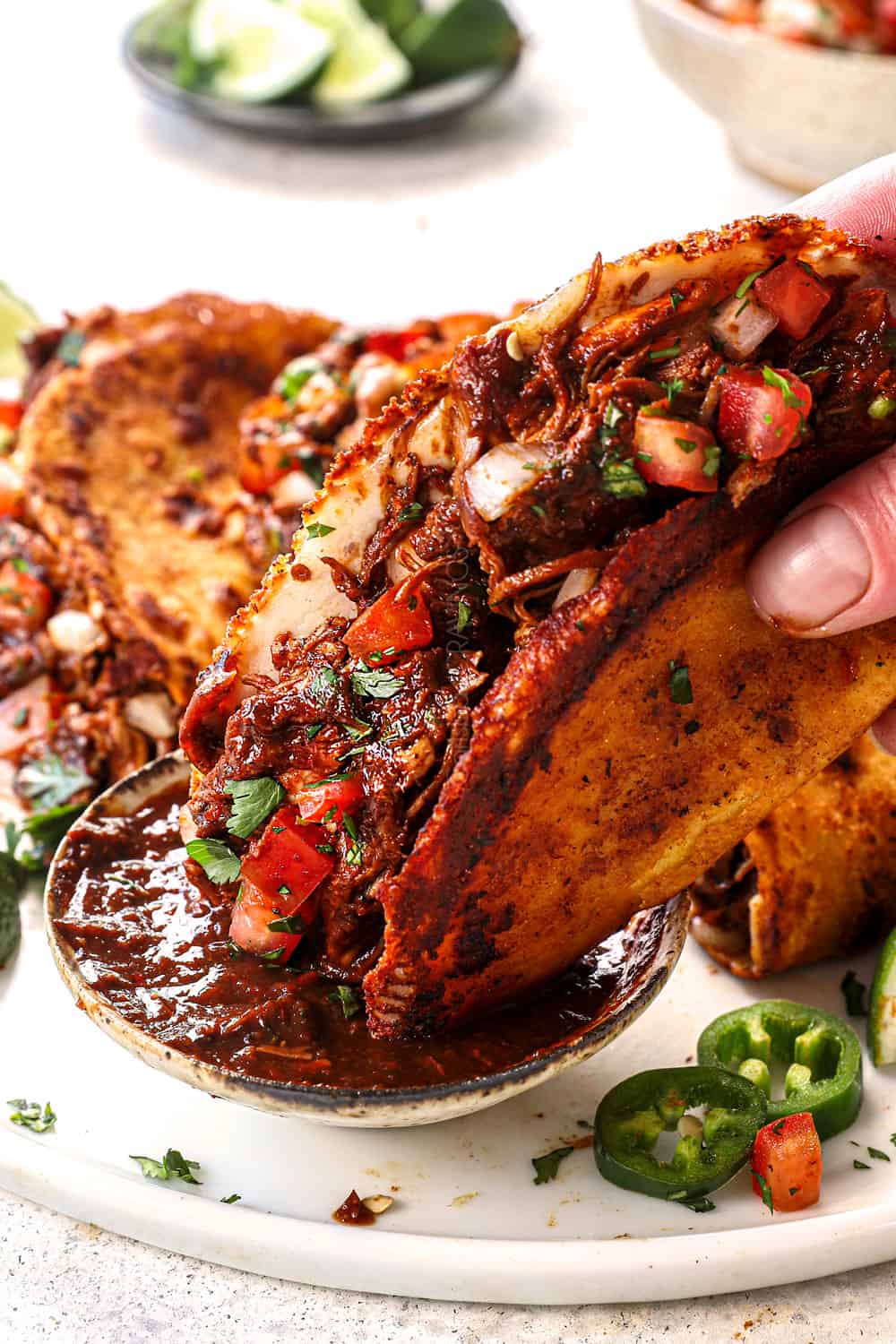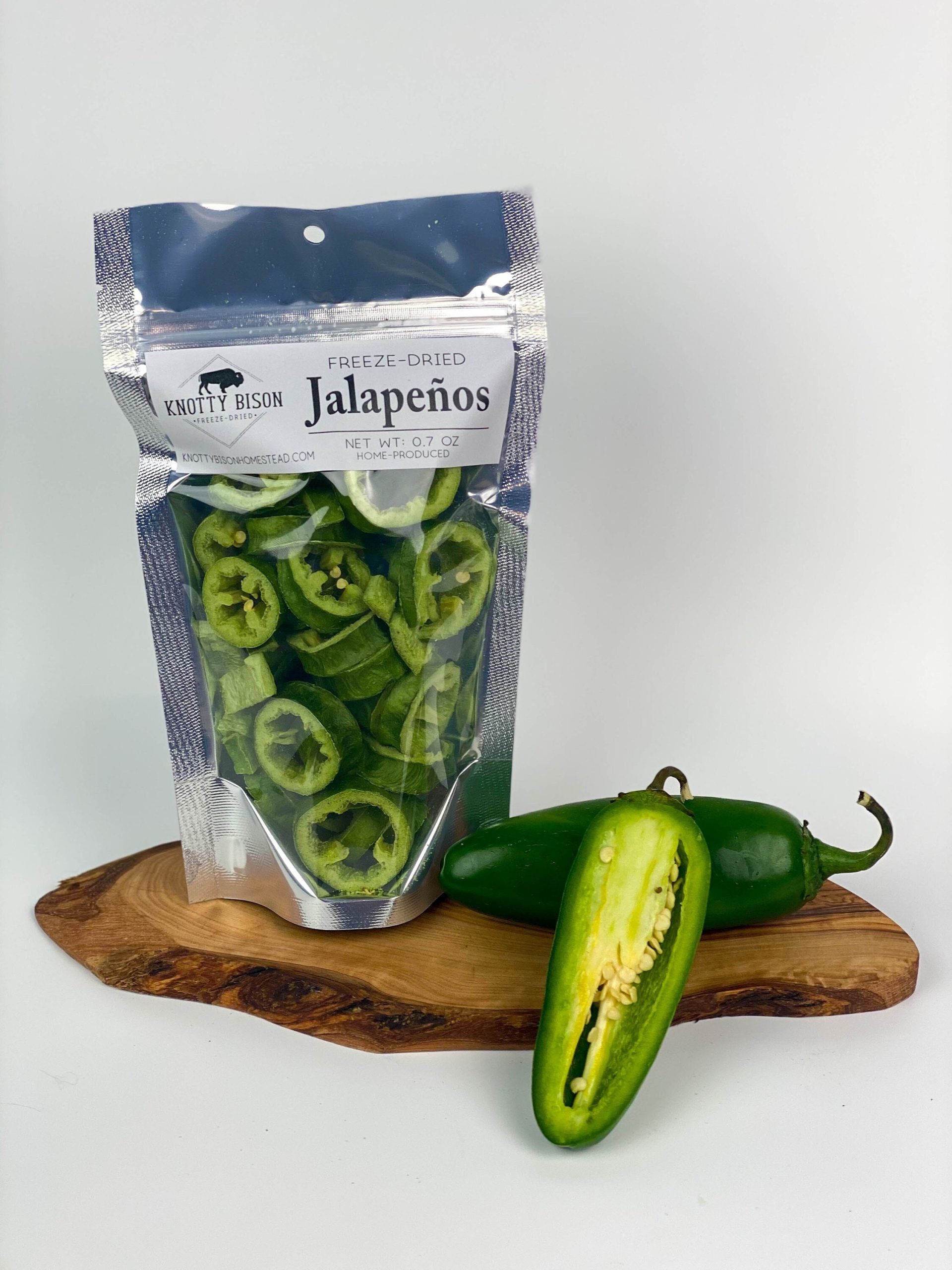Is wasabi spicy enough to make you cry?
– Wasabi is a common ingredient used in many dishes for its heat and umami flavor.
– Anecdotally, wasabi causes more discomfort than a Bell Pepper or Poblano Pepper, and a similar level of discomfort as most Jalapeño Peppers.
– Genuine wasabi, or Wasabia Japonica, is a rare ingredient that is difficult to grow and is native to Japan.
– Wasabi paste, commonly served in North America, is usually a mixture of horseradish and green food coloring.
– The spiciness of wasabi comes from a chemical called ‘allyl isothiocyanate’ produced by a plant similar to spicy mustard, radishes, and horseradish.
– The heat from wasabi is shorter in duration and creates a burning sensation in the nose and eyes.
– Wasabi is not spicy on the Scoville Scale because it does not contain capsaicin.
– Wasabi’s heat is said to develop rapidly, last for a brief duration, and have a sharp sensation in the nasal passage.
– Wasabi’s heat level is subjective and can vary.
– Wasabi is said to have a heat level similar to Jalapeño Peppers, which fall between 2,500 SHU and 8,000 SHU.
– Wasabi is not as hot as Habanero Peppers, Ghost Peppers, or Carolina Reaper.
– Other foods like black pepper and ginger have heat levels closer to chili peppers than wasabi.
– Wasabi contains a chemical called ‘allyl isothiocyanate’ which irritates the nasal passages and makes it spicy.
– Wasabi’s heat is sharp, shorter in duration, located in the nasal passage, and relatively mild compared to chili peppers.
– Wasabi’s heat cannot be directly compared to other foods on the Scoville Scale or Pyruvate Scale.
